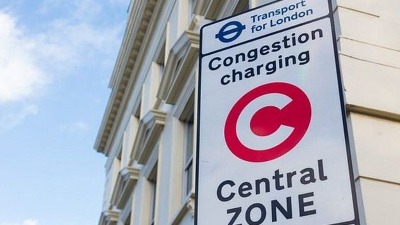What is the Congestion Charge?
The Congestion Charge is an area where a fixed fee is charged to drive into during peak hours. The objective of the congestion charge is to reduce traffic and minimise the negative effects of private automobiles on the city. The main aim of the Congestion Charge, as with any other road pricing scheme, is to reduce traffic congestion. It has also been proved that road pricing can help reduce CO2 emissions.
Read on to find out more about the Congestion Charge.

What is the charge?
The London Congestion Charge is a daily fee that motorists must pay when driving inside the City of London area during specified hours. The charge is paid for each vehicle, regardless of the number of passengers. It was introduced in 2003 with the aim of reducing the number of vehicles entering the central London area.
When does the Congestion Charge apply?
The London Congestion Charge applies 7:00-18:00 on Monday-Friday, and 12:00-18:00 on Saturday, Sunday and bank holidays. For more information on when the charge applies, you can visit the Transport for London website.
How much is the London Congestion Charge?
The Congestion Charge is £15 per day, per vehicle. However, the following vehicles are exempt from the charge:
- Two-wheeled motorbikes
- Emergency service vehicles
- NHS vehicles
- Vehicles used by disabled people
- Taxi’s
For the full list of exemptions and discounts, visit the TFL website.
If your car doesn’t meet the ULEZ standards, you will also need to pay that charge.
Is there an alternative to paying the Congestion Charge?
Yes, you can apply for a congestion charge exemption. This can be done online, but you need to have a valid reason for not paying the fee. You can apply for an exemption if you reside outside the UK, are a diplomatic visitor to the UK, have a disabled badge, have a vehicle that isn’t roadworthy, or are a resident inside the congestion zone.
The advantages of the Congestion Charge
The congestion charge has reduced the number of private cars within the London city limits. This has resulted in the reduction of congestion and pollution levels in the city. London also gets an increased number of people using public transport.
The disadvantages of the Congestion Charge
The main disadvantage of the congestion charge is that it does not account for vehicle emissions. Many people who commute in large cities are in vehicles that are eco-friendlier and fuel efficient, but these vehicles are required to pay the same amount of money as smaller private cars that produce more emissions.
Also, if your vehicle doesn’t meet the ULEZ standard, you may need to pay an additional charge. To find out more about the ULEZ charge, click the button below.
Ultra Low Emission Zone
Overall, the congestion charge has helped reduce traffic and emissions throughout the city of London, therefore being successful in what it was introduced for. The charge has led to an increase in the use of public transport, which in turn has made the roads quieter throughout the city.
Did you enjoy this blog post? |


